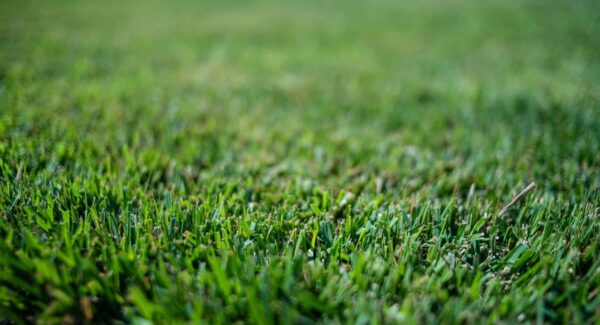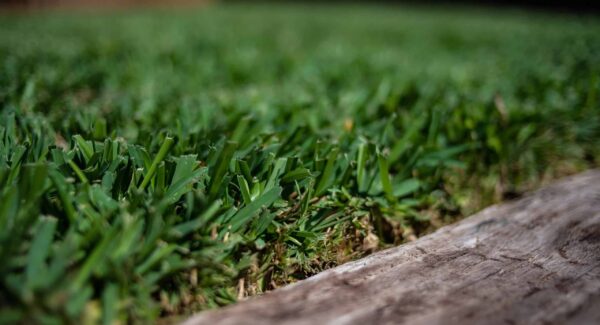Everything You Wanted to Know About Compost for Lawn
Introduction
As a flourishing lawn is closely linked to the quality of its soil, there’s no predominant method to enhance soil quality than by incorporating compost.
Commonly recognized as a practice that can revitalize poor lawns or maintain the vitality of freshly laid sod, composting delivers vital nutrients to the soil, enhancing its texture and structure and facilitating better absorption of water and nutrients by the grass’s roots.
If you tend to elevate the quality of your turf, composting is the right way of doing it. Here, we provide a comprehensive guide on how and why to use compost for lawn care.
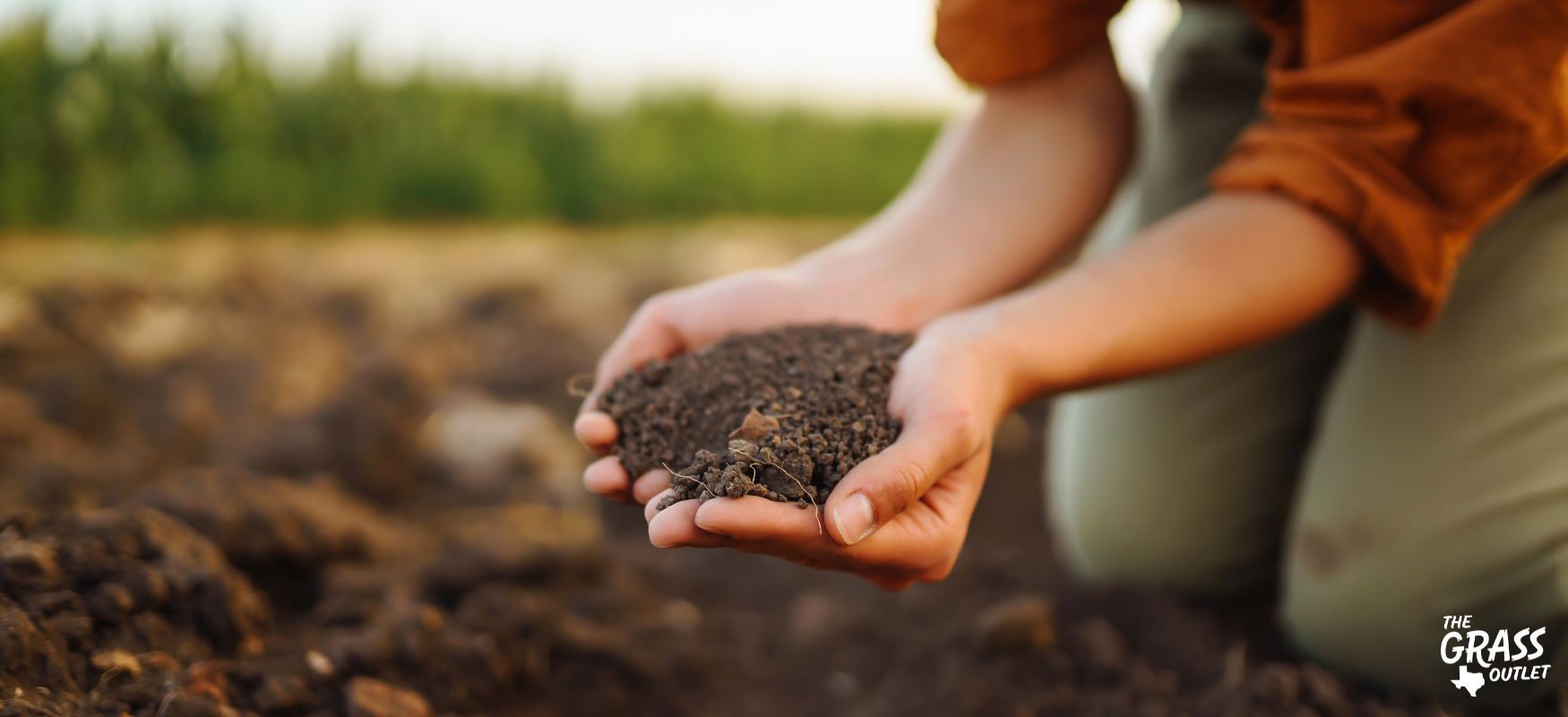
What is Compost and Why Use It for Your Lawn
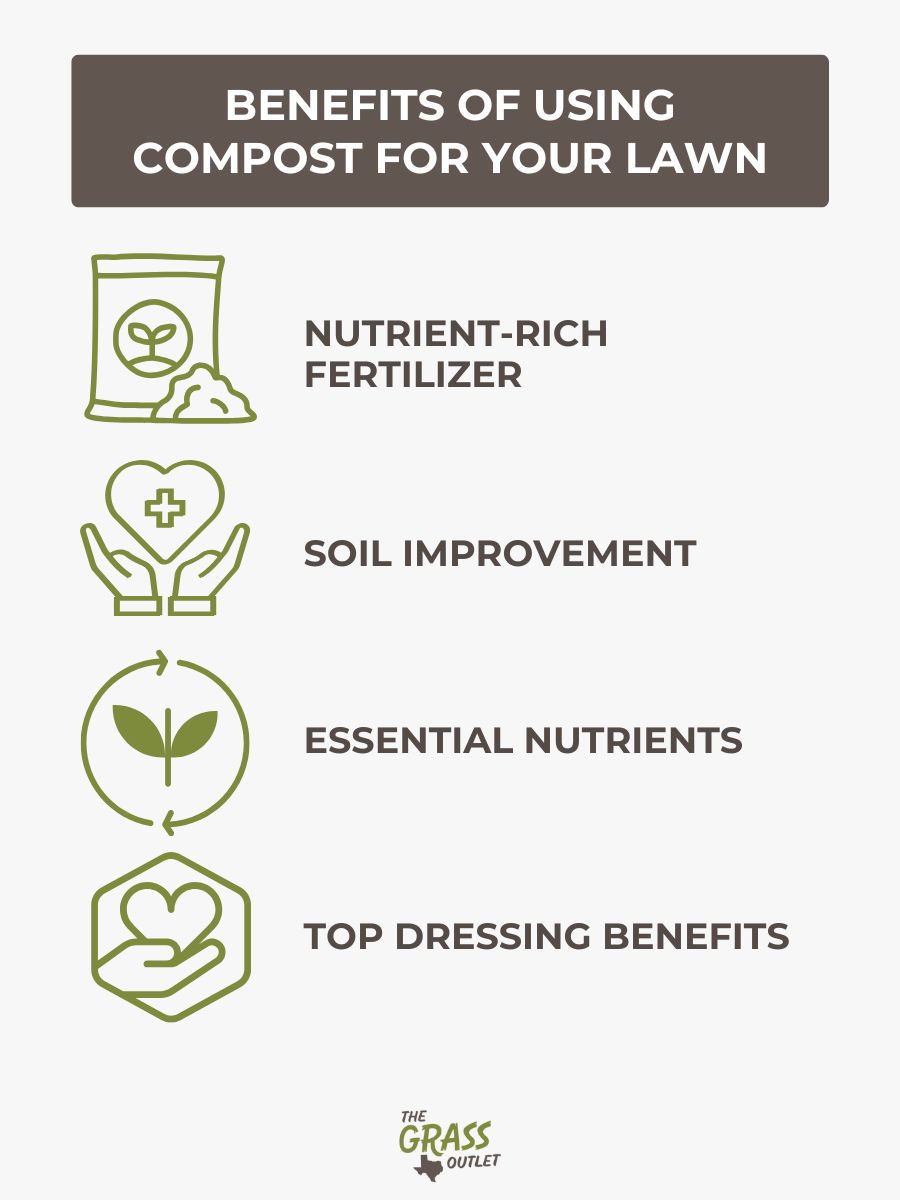
When integrated into the soil, compost becomes a natural fertilizer. Adding a layer of high-quality compost to your lawn increases nutrient levels and microbial activity, improves moisture retention, and promotes the development of robust, deep roots. It’s undoubtedly a task worth undertaking, and its benefits extend throughout all phases of a lawn’s lifecycle, from freshly laid sod blocks to the development of a dense, robust turf.
Compost contains essential nutrients such as nitrogen, phosphorus, potassium, and various micronutrients that naturally nourish lawns.
Applying compost as a top dressing to a lawn introduces organic matter into the soil, enhancing soil structure and proper drainage. This organic matter also serves as a habitat for beneficial microorganisms. Numerous microbes work within the soil to convert organic fertilizer and minerals into nutrients available to plant roots.
Preparing Your Lawn for Topdressing
Considering the timing, topdressing with compost is feasible whenever the ground isn’t frozen.
However, directly incorporating compost into the soil by applying it immediately after aeration greatly enhances root production and soil health. Likewise, when overseeding a lawn, topdressing with compost is highly recommended.
Engaging in this practice once or twice a year brings more significant lawn benefits than less effective quick-fix products. This process is also ideal for any lawn, whether Buffalo, Bermuda, Zoysia, or St Augustine grass.
Determining the Right Amount of Compost
Established lawns require only a layer of compost, typically ranging from a 1/4 to 1/2 an inch in thickness. Excessive thickness can suffocate the grass and disrupt its essential functions.
For optimal depth, it’s recommended to use one cubic foot of compost for every 25 square feet of lawn. While a cubic foot is commonly available for bagged compost, bag sizes may vary. However, if your project requires more than ten bags of compost, purchase bulk compost, typically sold by the cubic yard, equivalent to 27 cubic feet.
For instance, if the lawn size is 1000 square feet, for the 1/4-Inch compost layer, you will need one cubic yard and two cubic yards for 1/2 inch compost layer.
When preparing soil for new grass, you must turn the compost into the existing soil. Incorporate a layer of compost from 1 to 2 inches and use a rototiller to mix the compost into the top 4-6 inches of existing soil before planting new grass. Go with a one-inch layer if your soil is moderately healthy, and increase to two inches if your soil is predominantly sandy, heavy clay, or deficient in organic matter.
Selecting the Right Type of Compost
There isn’t a singular type of compost that perfectly suits all lawn needs. Compost quality varies based on its composition and production method. Weed seeds, pesticide or herbicide residues, and large, incompletely decomposed materials are undesirable elements in compost.
Both homemade and store-bought compost have their advantages and drawbacks. Store-bought compost can be tailored to optimize lawn growth scientifically. However, it may contain fillers like sawdust and need more diverse organic materials and microorganisms necessary for soil health. If purchasing compost in bags, seek those labeled with the STA (Seal of Testing Assurance) certification developed by the US Composting Council.
On the other hand, homemade compost offers control over its composition, ensuring it’s chemical-free. Nearly any organic material, including kitchen scraps, coffee grinds, leaves, and grass clippings, can be composted.
Some recommendations are to use compost produced through a hot composting process, where microbial activity generates heat exceeding 140°F. This high temperature neutralizes weed seeds and pathogens present in compost inputs. If using commercial or municipal compost, you will meet this criterion. However, if using homemade compost, verify its temperature with a soil thermometer during the active composting phase.
Application Techniques for Topdressing Your Lawn with Compost
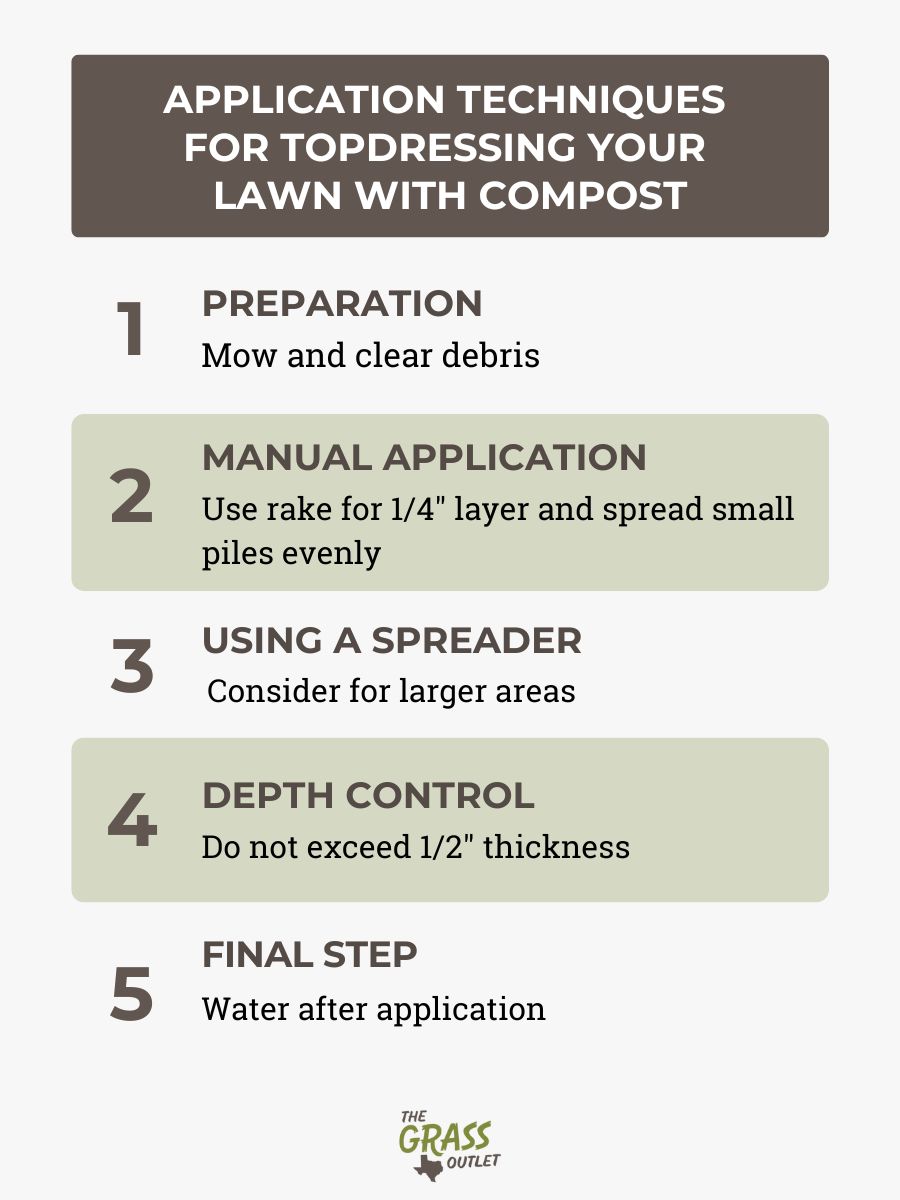
Applying compost to your lawn may appear complicated initially, but following the next steps is easy.
- Before topdressing your lawn, mow it and clear away debris such as clippings and leaves.
- Use a rake to disperse compost across the lawn, aiming for even coverage. It also can be achieved manually, creating a layer approximately 1/4″ thick.
- Distribute small compost piles evenly throughout the lawn, ensuring they’re no larger than three or four shovelfuls each. The goal is to space the piles so that once spread, the lawn has uniform coverage without any gaps. At each pile, rake the compost outwards in all directions until the grass blades are nearly visible through the compost layer.
- For larger areas, consider using a specialized compost spreader.
- Ensure you do not apply a layer exceeding half an inch in thickness. The grass needs to penetrate through this layer. If the top dressing is overly deep, the grass beneath may perish, leading to bare patches where weeds can take hold.
- Finally, water the area.
Watering After Compost Application
By watering the newly composted lawn, you initiate the process of the material working its way into the soil – optimal integration of compost into the soil. Additionally, watering assists in rinsing the compost off grass blades, ensuring they can access sunlight.
Avoid excessive water over a brief timeframe, as this may cause the compost to run off instead of staying where it’s needed in the lawn.
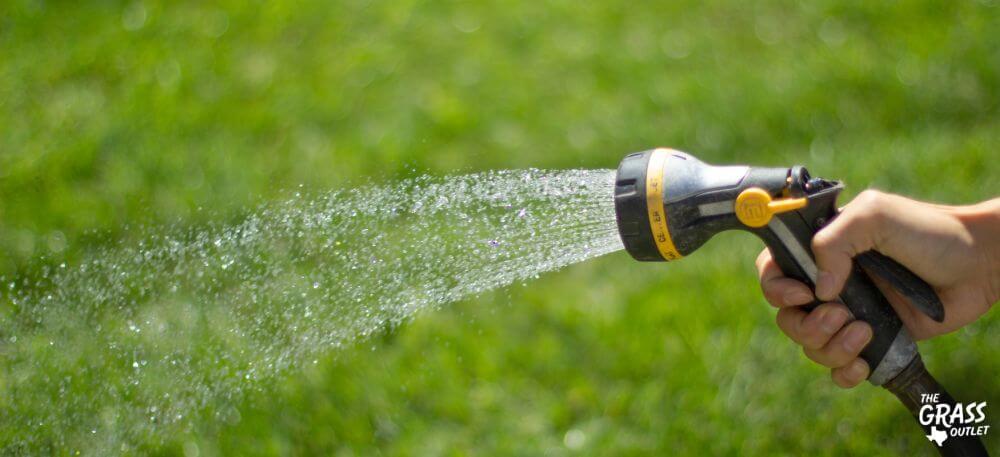
Supplementing Compost with Fertilizers
Although adding compost to the soil is super beneficial, supplementing your lawn with fertilizer is necessary. Composting cannot fully replace the need for fertilizer, so consider using it alongside compost. Using a slow-release fertilizer offers continuous nourishment, resulting in denser turf that can withstand foot traffic and inhibit weed growth.
In northern regions with cool-season grasses, apply such fertilizer once or twice between early September and late fall with an 8-10-week interval between applications. Apply it for southern areas with warm-season grasses right after winter dormancy and again in late spring. Please do it again once or twice at the beginning of the fall. Check out our tips about fertilizing.
Conclusion
Compost serves as a vital soil supplement that enhances grass in numerous ways. Plenty of organic matter, a thriving community of microorganisms, and essential plant nutrients – all those benefits lead to accelerated growth, vibrant greenery, denser coverage, improved health, and enhanced lawn resilience. This comprehensive support enables your yard to maintain peak conditions with reduced reliance on fertilizer and watering.
Moreover, compost offers environmental benefits by enriching the soil with valuable nutrients and delivering a sustainable alternative to harmful chemical fertilizers. Embrace these eco-friendly lawn maintenance practices for a greener, healthier environment. For professional recommendations and assistance, do not hesitate to contact the experts at The Grass Outlet.
